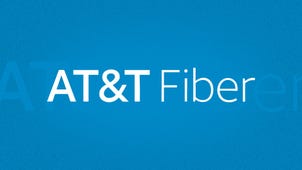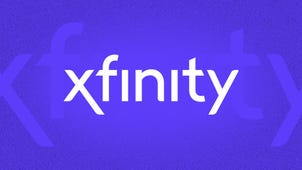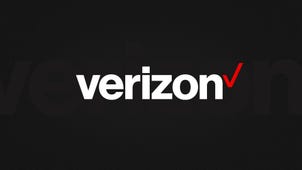Best Internet Providers in San Francisco, California


AT&T Fiber – Best gigabit service among San Francisco internet providers
- Prices: $55 – $180 per month
- Speeds: 300 – 5,000Mbps
- Key Info: Unlimited data, no contracts, equipment included

Sonic – Best regional option among San Francisco internet providers
- Prices: $40 – $50 per month
- Speeds: 5 – 10,000Mbps
- Key Info: No data caps or contracts

Xfinity – Best availability among San Francisco internet providers
- Prices: $20 – $300 per month
- Speeds: 75 – 6,000Mbps
- Key Info: Data caps on some plans, lots of plan options, solid customer satisfaction numbers

Verizon 5G Home Internet – Best fixed wireless option among San Francisco internet providers
- Prices: $50 – $70 per month
- Speeds: 85 – 1,000Mbps
- Key Info: Unlimited data, no contracts, free equipment, 50% discount for qualifying Verizon mobile customers
It’s not surprising that Silicon Valley has created a hotbed of internet service providers in the San Francisco Bay Area. Internet shoppers have access to fiber providers, cable internet companies, smaller, rural or region-specific ISPs, as well as emerging alternatives, including 5G fixed wireless. That’s a lot of information to process if you’re looking for a new internet plan.
Residents aiming to find the best internet provider in the San Francisco area will have a few things to consider, including price, terms and data speeds. That’s where we come in. CNET examines customer service, speed, pricing and overall value before recommending the best internet service in your area. To help you choose between them, keep reading for a full rundown of your options and how they stack up. We’ll give you a look at the fastest and cheapest plans available in the area, the fine print and price increases to watch out for, and the providers we’d recommend first.
Best internet providers in the Bay Area
We’ve conducted extensive research into the speeds, prices and terms of San Francisco’s top internet providers and closely examined each one’s overall availability throughout the area. Here are the providers we think you should start with as you shop for a new home internet plan.
Note: The prices, speeds and features detailed in the article text may differ from those listed in the product detail cards, which represent providers’ national offerings. Your particular internet service options — including prices and speeds — depend on your address and may differ from those detailed here.
AT&T Fiber
Best gigabit service among San Francisco internet providers
Product details
Price range
$55 – $180 per month
Speed range
300 – 5,000Mbps
Connection
Fiber
Key Info
Unlimited data, no contracts, equipment included
AT&T offers home internet services in 21 states, including California. It’s a likely option at most Bay Area addresses, but service is split between homes wired for AT&T Fiber, which is excellent, and homes wired for AT&T Internet, a DSL service that’s ordinary at best.
Availability: While AT&T Fiber is available in places like Balboa Park, Ingleside, Outer Sunset and the Richmond District, it was difficult finding serviceable addresses in other San Francisco neighborhoods, including Bayview, Buena Vista, the Mission District and Parkside. Even the Full House house over on Broderick Street isn’t fiber-eligible — it has to settle for AT&T DSL speeds of 100Mbps at best. Those DSL speeds vary greatly by address, too; at other locations, speeds won’t get any higher than 5Mbps.
Plans and pricing: With fast speeds ranging from 300 to 940Mbps for $55 to $80 per month and strong customer satisfaction scores from organizations like J.D. Power and the American Customer Satisfaction Index, it’s not hard to see why AT&T Fiber is CNET’s top overall pick for home internet service in 2023. The company’s recently introduced multi-gig plans, which offer upload and download speeds of up to 2 or 5Gbps (2,000 or 5,000Mbps), are available in parts of San Francisco, Oakland and San Jose. AT&T says that fiber is available at “millions of locations” throughout the Bay Area, with multi-gig speeds currently available at roughly one-third of fiber-eligible addresses. That means checking to see if AT&T Fiber is available at your address is probably the first thing you should do when shopping for home internet in the San Francisco area.
Fees and service details: AT&T Fiber features enticing perks and great terms that steer clear of data caps, equipment fees or arbitrary price increases. That contrasts AT&T’s DSL offerings, which add in data caps and price increases after 12 months. You can almost certainly do better than that if DSL is your only option from AT&T — but if your Bay Area home is wired for fiber, then you’re in luck because AT&T Fiber is one of the best home internet options in the country right now.
Read our AT&T home internet review.
Sonic
Best regional option among San Francisco internet providers
Product details
Price range
$40 – $50 per month
Speed range
5 – 10,000Mbps
Connection
DSL, fiber
Key Info
No data caps or contracts
Based in Santa Rosa, Sonic is the largest independent ISP in Northern California, and it offers internet services throughout much of the Bay Area and surrounding regions. Most customers get their connection via DSL infrastructure, but the company has also been working on expanding a fiber footprint throughout the area.
Availability: The most recent fiber expansion highlighted on the company’s website occurred in 2019. Following that, Federal Communication Commission data from June 2021 puts the percentage of Sonic customers with access to fiber at about 43%, which is ahead of where AT&T was in the same report (albeit with a much larger national footprint). Sonic tells CNET that it continues to add fiber-serviceable addresses to its footprint, including addresses throughout San Francisco, Peninsula, South Bay, North Bay and East Bay communities.
Plans and pricing: Sonic doesn’t offer different internet plans or speed tiers. Instead, you’ll get the fastest speeds available at your address for a flat rate of $40 per month, plus an optional $10 per month if you need to rent a router. The company tells CNET that symmetrical upload and download speeds as high as 10Gbps are available to roughly half of all fiber subscribers. Most of that fiber base should expect speeds closer to a gig or less. In the first quarter of 2023, the speed-testing site Ookla named Sonic the fastest internet provider in Oakland with overall median download speeds of nearly 297Mbps, fiber and DSL included.
Fees and service details: Speeds aside, Sonic doesn’t enforce contracts or data caps, it doesn’t charge an installation fee, and it offers new customers a free first month of service, all of which make it a pretty appealing option from the get-go. The company’s DSL service is nothing worth getting excited about, but if Sonic can offer fiber service at your address, you should consider it one of your top options.
Xfinity
Best availability among San Francisco internet providers
Product details
Price range
$20 – $300 per month
Speed range
75 – 6,000Mbps
Connection
Cable
Key Info
Data caps on some plans, lots of plan options, solid customer satisfaction numbers
Unless you live at the bottom of the Bay, the odds are extremely high that your home is wired for cable internet from Comcast’s Xfinity home broadband service.
Availability: The largest cable provider in the US, Comcast’s coverage map covers just about all of San Francisco, Oakland and San Jose, as well as surrounding areas like Alameda, Fremont, Hayward, Palo Alto and San Mateo, and download speeds as high as 1,200Mbps (1.2 gigabits per second) are available at 98% of serviceable addresses.
Plans and pricing: The rub is that you’ll get those speeds over a coaxial cable connection, which means the upload speeds will be much lower. Even with that 1.2Gbps plan, the uploads won’t exceed 35Mbps. Multi-gig fiber plans with matching upload and download speeds of 6Gbps might be available at some select addresses, but as of June 2021 (the most current data available from the FCC), Comcast only offered those fiber speeds to 4% of customers, so don’t get your hopes up.
Fees and service details: Xfinity plans come with a one-to-two-year promo price, after which you can expect a monthly rate increase of $15 to $30. You’ll also need to keep an eye on your data usage, as several of Comcast’s plans come with a data cap of 1.2 terabytes (1,200GB), though that’ll be more than enough monthly data for most households. There’s enough speed and value here for Comcast Xfinity’s widely available cable plans to serve as a respectable backup for homes where fiber isn’t an option.
Read our Xfinity Internet review.
Verizon 5G Home Internet
Best fixed wireless option among San Francisco internet providers
Product details
Price range
$50 – $70 per month (50% off for eligible 5G mobile customers)
Speed range
85 – 1,000Mbps
Connection
Fixed wireless
Key Info
Unlimited data, no contracts, free equipment, 50% discount for qualifying Verizon mobile customers
Getting a wireless home internet connection is nothing new; satellite and fixed wireless providers have been doing that for decades. However, getting your home online through a wireless 5G connection is still a relatively new option. Verizon and T-Mobile are racing to bring as many households into their respective coverage maps as possible.
Availability: Per Verizon’s cellular coverage map, 5G Ultra Wideband availability is hit-and-miss throughout the Bay Area. The most substantial levels of service are centralized in downtown San Francisco, Daly City, Forest Hill, the Mission, Oakland, Pacific Heights and the Richmond District. Other parts of the area will be left with access to Verizon’s 5G Nationwide coverage, which works well enough for mobile phones but isn’t usually indicative of strong 5G Home coverage with the fastest speeds possible.
Plans and pricing: Verizon promises much higher top speeds, provided a strong enough 5G Ultra Wideband signal is available at your address. You won’t get the multi-gig speeds available to Verizon Fios customers in the Northeast, but you might be able to hit downloads as fast as 1,000Mbps. Customers will be charged $70 monthly for Verizon 5G Home Plus (which features a three-year price guarantee and several perks), while there’s also a $50-per-month tier with speeds ranging from 85 to 300Mbps and a two-year price lock.
Fees and service details: Verizon 5G Home Internet boasts appealing terms — no equipment fees, no data caps, and no prescheduled price increases after 12 months. It’s also especially enticing for existing Verizon mobile subscribers, who may be able to get a 50% discount on home internet service. That makes it worth checking to see if Verizon is an option at your address, and if so, it’s a good place to start for 5G home internet.
Read our Verizon 5G Home Internet review.
San Francisco home internet providers overview
| Internet technology | Speed range | Monthly promo price range | Regular monthly price | Data caps | |
|---|---|---|---|---|---|
| Astound Broadband | Cable | 100-1,500Mbps downloads, 5-50Mbps uploads | $25-$80 | $70-$100 | None |
| AT&T Home Internet | DSL | 5-100Mbps downloads, 1-20Mbps uploads | $55 | $70 | 1.5TB (no data cap with 100Mbps plan) |
| AT&T Fiber | Fiber | 300-5,000Mbps downloads and uploads | $55-$180 | $55-$180 | None |
| Comcast Xfinity | Cable | 75-1,200Mbps downloads, 10-35Mbps uploads | $25-$80 | $50-$103 | 1.2TB on some plans |
| Raw Bandwidth Communications | DSL | 3-50Mbps downloads, 512Kbps-5Mbps uploads | $30-$60 | $30-$60 | None |
| Sonic | DSL/Fiber | 5-10,000Mbps downloads, 1-10,000Mbps uploads | $50 | $60 | None |
| T-Mobile Home Internet | 5G/LTE | 72-245Mbps downloads, 15-31Mbps uploads | $50 | $50 | None |
| Verizon 5G Home Internet | 5G/LTE | 85-1,000Mbps downloads, 50Mbps uploads | $50-$70 per month (50% less with a qualifying Verizon mobile plan) | $50-$70 per month (50% less with a qualifying Verizon mobile plan) | None |
Show more (3 items)
Source: CNET analysis of provider data.
Also known as Wave, Astound Broadband offers cable internet services in the San Francisco area.
All available San Francisco residential internet providers
Astound Broadband
Also known as Wave, Astound Broadband is a cable internet option available throughout San Francisco, including the Castro, the Mission District, Noe Valley and Potrero Hill, and surrounding areas like Daly City, San Mateo and South San Francisco. Download speeds start at 100Mbps for $25 per month and top out at 1,500Mbps for $80 per month, which are outstanding values at first glance, but all plans offer upload speeds no higher than 50Mbps, which doesn’t match fiber internet standards.
Worst of all is the steep price increases after your introductory period. For instance, according to Astound’s California rate card, that 100Mbps plan jumps from $25 per month to $70 per month, and you’ll need to pay a stingy $18 fee each month to rent your modem, too. Still, with no contracts or data caps to worry about, Astound might be worthwhile at addresses where slower fixed wireless and satellite connections are the only other options.
EarthLink
EarthLink’s been around since the early days of the internet. But these days, the company functions as a third-party internet reseller, leasing wired and wireless infrastructure from other providers to offer nationwide service. That means EarthLink offers wide availability and a mix of different internet plans using different technologies — everything from fiber to fixed wireless and DSL. Whether or not it’s a viable option depends entirely on the specific services available at your address (and in most cases, you’ll get a better deal by signing up with the first-party provider instead). If other options are lacking, then it’s probably worth seeing what EarthLink can offer, particularly if fiber is an option, but in most cases, it shouldn’t be one of your first choices.
Etheric Networks
Boasting one of the US’s largest fixed wireless coverage maps, with service covering the entire Bay Area and stretching as far south as Salinas, Etheric Networks offers residential internet service through a wireless connection to the company’s hardwired infrastructure. You’ll need to schedule a free site survey at your home to see if Etheric is even an option at your address, and while the company doesn’t post its prices online and didn’t respond to my request for an overview of plans and costs, a 2021 Etheric blog post explaining why the service costs more than Comcast gives a good indication that it skews on the expensive side.
You’ll find a significant number of buildings in San Francisco and Oakland wired for Google Fiber Webpass, a high-speed fixed wireless internet service.
Google Fiber Webpass
None of the Bay Area metros are Google Fiber cities — for that, you’ll need to head south to Orange County. However, San Francisco and Oakland are home to scores of buildings equipped with Google Fiber Webpass. This fixed wireless service uses antennas to send a high-speed signal to multi-dwelling buildings like apartment complexes. Speeds up to a gigabit are possible at some addresses for a flat rate of $70 per month or $750 upfront if you’re willing to pay for a year in advance. Most customers seem to be hitting high speeds, too, as the speed-testing site Ookla ranks Webpass as the fastest internet provider in San Francisco, with average download speeds of 259Mbps. You can scan this map for serviceable addresses — if Webpass is an option where you live, it’s worth trying.
Monkeybrains
With a cheeky brand name and limited availability throughout central San Francisco, Oakland, Brisbane and Berkeley, Monkeybrains is a local provider of fixed wireless internet services operating in San Francisco since 1998. When you sign up, the company will install an antenna on the roof of your building and run an Ethernet cable into your home — plug in a router, and voila, internet access. Your speeds will depend on the strength of the signal at your address, and you shouldn’t expect anything blazing fast, but at a flat rate of $35 per month, Monkeybrains might be worth a call if nothing else is available. In most cases, you’ll have a better, faster option.
Raw Bandwidth Communications
Another local provider in the San Francisco area, Raw Bandwidth utilizes a mix of internet technologies to get businesses and residential addresses online and even offers private line service with up to gigabit speeds. Residential service is available in much of San Francisco, South San Francisco, San Bruno, Oakland, Daly City, Colma, Millbrae, Burlingame, Hillsborough, Los Altos, and portions of San Mateo. Still, most homes in that coverage map will have to settle for DSL or even dial-up service, making this an outdated option for Bay Area residents. Speeds won’t get any faster than 50Mbps under the best circumstances and will likely be much lower. Still, with no data caps and no prescheduled price increases, Raw Bandwidth might be a good fit for homes requiring basic connectivity for checking email and light browsing.
Getting your household online via a satellite connection can be an expensive proposition. It really only merits consideration as a last resort in SF.
Satellite internet
Satellite internet from HughesNet or Viasat is available pretty much anywhere. Still, you shouldn’t expect fast speeds or low latency, given that your traffic literally needs to go to space and back. You shouldn’t expect value, either — satellite internet often comes with steep equipment costs, tight data caps, and long-term service contracts.
With HughesNet, your download speeds won’t get any higher than 25Mbps, and the cheapest plan with just 15GB of data costs $65 per month after the first six months, plus $15 per month for equipment (or $450 upfront). Speeds of up to 150Mbps are an option with Viasat, but you’ll need to pay an eye-popping $350 monthly after three months of promo pricing to hit them. All plans from both providers come with a two-year service contract.
Starlink
Starlink, the satellite internet service from SpaceX and Elon Musk, is your third option. It doesn’t offer the same universal availability as HughesNet or Viasat, and even if it’s an option at your address, a current backlog of preorders means you might not even be able to start service until later in 2023. From there, you’ll pay $110 per month plus $599 upfront for the equipment, but with satellites positioned in low-earth orbit, the speeds are higher and the latency lower than other satellite options. Even so, the high costs across the board mean that satellite internet from any provider should only be used as a last resort when nothing else is available.
T-Mobile Home Internet
For a flat rate of $50 per month, T-Mobile can connect eligible addresses to the internet over the same wireless airwaves used for mobile connections, including 5G airwaves. The service offers better overall availability than Verizon since it leans on 4G/LTE airwaves as well, but that also means that average speeds are slower, with downloads ranging from 72-245Mbps and uploads ranging from 15-31Mbps. There are no data caps or contracts with T-Mobile, so it’s an appealing option for rural customers in the coverage map without access to faster fiber or cable plans. It’s worth a shot elsewhere, too — though I’d recommend checking to see if you can get faster speeds from Verizon for the same price, first.
Home internet pricing in San Francisco
If you’re trying to keep your internet bill as low as possible, you won’t need to spend much more than $50 monthly from any of San Francisco’s top providers. With Comcast Xfinity, available just about everywhere, the cheapest plan available nets you download speeds of up to 75Mbps and upload speeds of up to 10Mbps for just $20 per month during the promo period. It’s a pretty basic offering as far as speed goes, but it still exceeds the FCC’s definition of broadband speed, which is 25Mbps down and 3Mbps up.
Astound has a $25 per month plan, which nets you download speeds faster than Xfinity’s at 100Mbps. That said, you’ll want to beware of the potential for a steep price increase to $70 per month after the promo period, which isn’t ideal for someone who wants their internet on the cheap side.
Cheapest internet plans in San Francisco
| Provider | Starting monthly price | Standard monthly price | Max download speed | Monthly equipment fee | Data cap |
|---|---|---|---|---|---|
| Comcast Xfinity Connect | $20 | $50 | 75Mbps | $15 | 1.2TB |
| Astound Broadband | $25 | $70 | 100Mbps | None | None |
| Raw Bandwidth Communications | $30 | $30 | 3Mbps | None | None |
| Sonic | $50 | $60 | 10,000Mbps | None | None |
| T-Mobile Home Internet | $50 ($30 with a qualifying T-Mobile cellular plan) | $50 | 182Mbps | None | None |
| Verizon 5G Home Internet | $50 ($25 with a qualifying Verizon mobile plan) | $50 | 300Mbps | None | None |
| AT&T Internet | $55 | $70 | 100Mbps | None | None |
| AT&T Fiber | $55 | $55 | 300Mbps | None | None |
Show more (3 items)
Source: CNET analysis of provider data.
Another standout for affordable internet in the Bay Area includes Verizon 5G Home, which costs $50 per month (or just $25 per month for existing Verizon mobile subscribers) and promises max download speeds of around 300Mbps. There’s no prescheduled price increase for that one, and it comes with a two-year guarantee that your bill won’t go up later down the line.
If your home is wired for fiber, you’re in good shape. Along with fast speeds, fiber internet offers some of the best value in broadband, with costs per Mbps that typically fall well below what you’ll get with cable, fixed wireless, DSL or satellite. Service from Sonic costs a flat $40 per month during your first year and nets you whatever the best possible speeds are at your address, making it a tremendous value for homes with wiring capable of hitting 10Gbps. Meanwhile, AT&T is more flexible with its fiber service, allowing users to pay less for lower speeds. At $55 per month and with no prescheduled price increases or equipment fees, the 300Mbps plan is a good bargain for fast internet.
The Affordable Connectivity Program can help low-income households with their internet bill
The Affordable Connectivity Program is a government-funded home internet discount of $30 per month for qualifying low-income households. Your home is eligible for the discount if your combined income is at or below 200% of the federal poverty guidelines or if you meet one of the following criteria:
- Received a Federal Pell Grant during the current award year.
- Meets the eligibility criteria for a participating provider’s existing low-income internet program.
- Participates in one of these assistance programs: SNAP, Medicaid, Federal Public Housing Assistance, Supplemental Security Income, WIC, Veterans Pension or Survivor Benefits ,or Lifeline.
- Participates in one of these assistance programs and lives on Qualifying Tribal lands: Bureau of Indian Affairs General Assistance, Tribal TANF, Food Distribution Program on Indian Reservations or Tribal Head Start (income based).
Eligible families can find more details on how to sign up with provider-specific instructions for Bay Area residents listed below:
How fast can you go in San Francisco?
With multiple fiber and cable providers, all covering significant chunks of the Bay Area, internet speeds in San Francisco are relatively strong, ranking in at 66th on Ookla’s list of the cities in the US with the fastest internet speeds and clocking in with median downloads of 193Mbps and average uploads of 32Mbps. Of the cities that CNET has covered thus far, that’s just behind Los Angeles (65th) and ahead of Portland (71st), Las Vegas (75th), St. Louis (76th), Miami (84th), Phoenix (90th), Minneapolis (91st), Chicago (92nd), Seattle (94th), Denver (95th), Dallas (97th) and Atlanta (98th). Incidentally, Oakland ranks much higher at 39th overall, with average downloads of 218Mbps and average uploads of 57Mbps.
Fastest internet providers in San Francisco
If you look over the fastest plans from each of the top providers in the area, you’ll first notice the multi-gig offerings from AT&T and Sonic, which offer top speeds of 5 and 10Gbps, respectively. Availability for those isn’t guaranteed, though — with both companies, the fastest plan available to most customers will come with speeds around a single gig. Gigabit download speeds are available from Comcast Xfinity and Google Fiber Webpass, but unlike AT&T and Sonic’s fiber-to-the-home offerings, the upload speeds for those respective cable and fixed wireless plans will be much slower.
What are the fastest internet plans in San Francisco?
| Plan | Max speeds | Starting monthly price | Internet technology | Data caps |
|---|---|---|---|---|
| Sonic | 10,000Mbps downloads and uploads | $40 | DSL/Fiber | None |
| Xfinity Gigabit Pro | 6,000Mbps downloads and uploads | $300 | Fiber | None |
| AT&T Fiber 5000 | 5,000Mbps downloads and uploads | $180 | Fiber | None |
| AT&T Fiber 2000 | 2,000Mbps downloads and uploads | $110 | Fiber | None |
| Astound Broadband 1.5 Gigs | 1,500Mbps downloads, 50Mbps uploads | $80 | Cable | None |
| Xfinity Gigabit Extra | 1,200Mbps downloads, 35Mbps uploads | $80 | Cable | None |
| Verizon 5G Home Plus | 1,000Mbps downloads, 50Mbps uploads | $70 ($35 with a qualifying Verizon mobile plan) | 5G/LTE | None |
| Xfinity Gigabit | 1,000Mbps downloads, 35Mbps uploads | $75 | Cable | None |
| AT&T Fiber 1000 | 1,000Mbps downloads and uploads | $80 | Fiber | None |
Show more (4 items)
Source: CNET analysis of provider data.
How CNET chose the best internet providers in San Francisco
Internet service providers are numerous and regional. Unlike the latest smartphone, laptop, router or kitchen tool, it’s impractical to personally test every ISP in a given city. So what’s our approach? We start by researching the pricing, availability and speed information drawing on our own historical ISP data, the provider sites and mapping information from the Federal Communications Commission at FCC.gov.
But it doesn’t end there. We go to the FCC’s website to check our data and ensure we’re considering every ISP that provides service in an area. We also input local addresses on provider websites to find specific options for residents. To evaluate how happy customers are with an ISP’s service, we look at sources including the American Customer Satisfaction Index and J.D. Power. ISP plans and prices are subject to frequent changes; all information provided is accurate as of the time of publication.
Once we have this localized information, we ask three main questions:
- Does the provider offer access to reasonably fast internet speeds?
- Do customers get decent value for what they’re paying?
- Are customers happy with their service?
While the answer to those questions is often layered and complex, the providers who come closest to “yes” on all three are the ones we recommend.
To explore our process in more depth, visit our page on how we test ISPs.
Internet providers in San Francisco FAQs
How fast are internet plans in San Francisco?
Does San Francisco have fiber internet?
Is Google Fiber available in San Francisco?
How much internet speed do I need?





